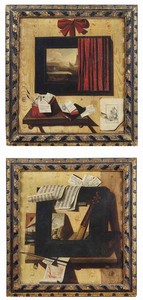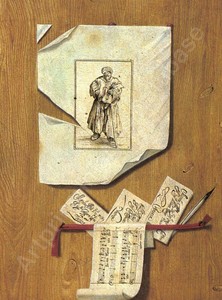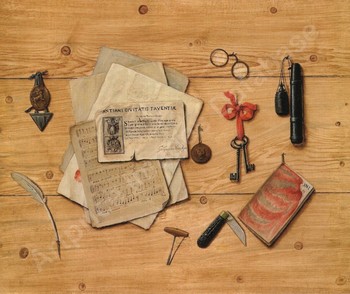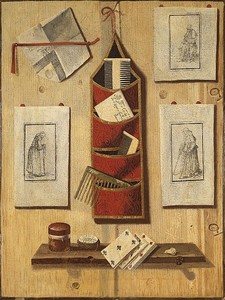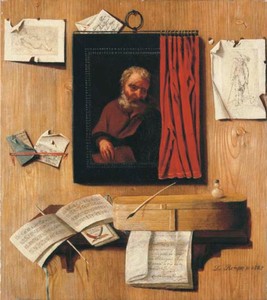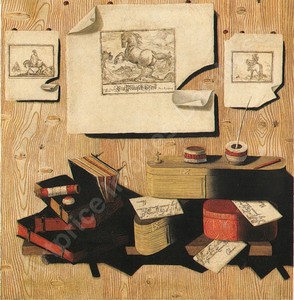Andrea Domenico Remps
Trompe l’oeil still life of prints and shelves of books and letters
Oil on canvas: 73 X 65,5 cm
Unsigned
Unsold at Sotheby’s London, 8/07/99
Estimate : 20.000 – 30.000 £ (+ buyer’s premium) = 30.000 – 45.000 € (+ BP)
This is a comparative item
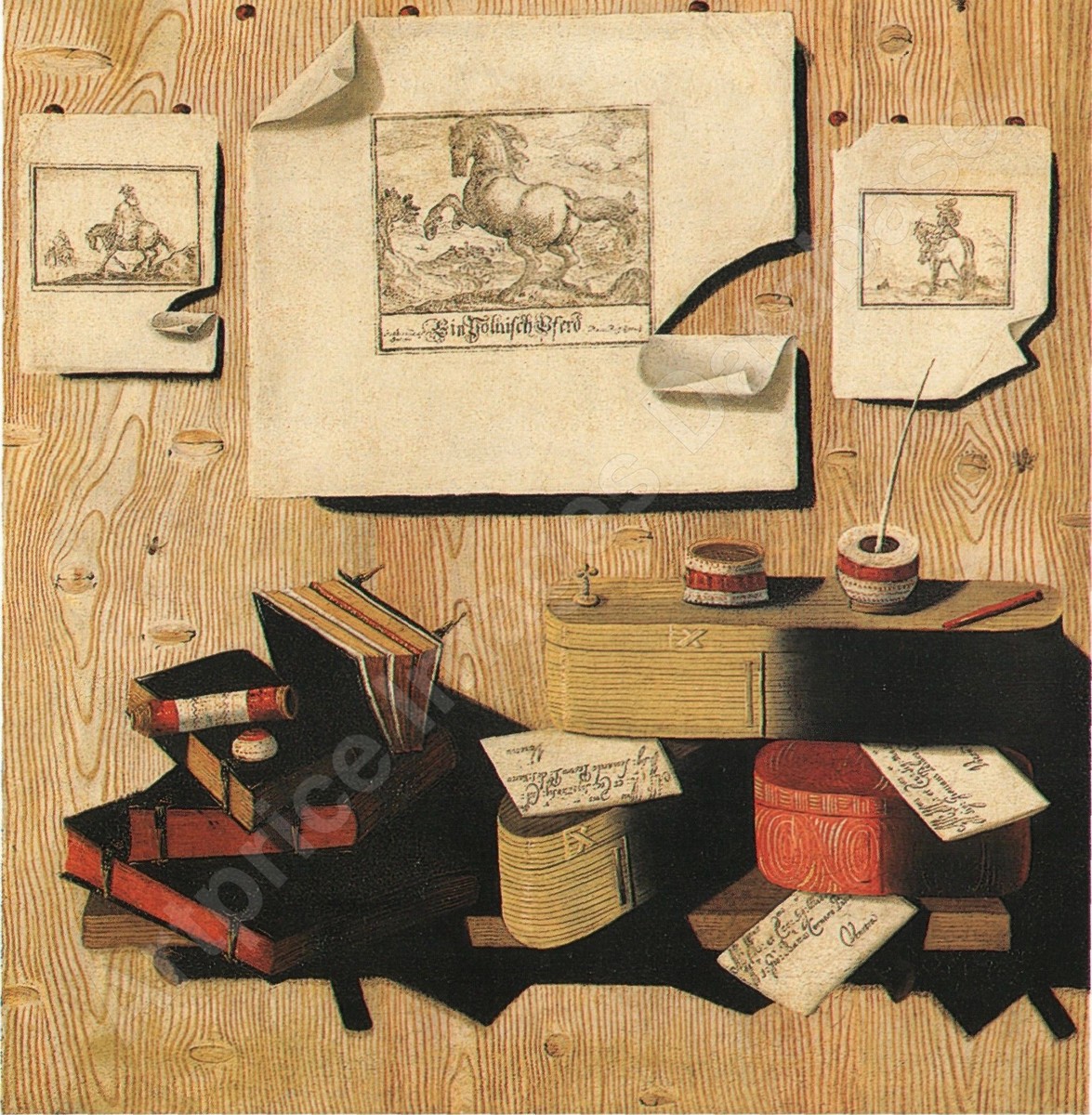
Painting for Sale
In short
Characteristic Venetian trompe l’oeil still lifes from the late 17th century are today being attributed to “Andrea Domenico Remps”.
But a few signed paintings are known by either Andrea Remps or by Domenico Remps (brothers or father and son?) and clearly some more artists might go hidden under the denomination “Andrea Domenico Remps”. Acoording to ancient sources both Andrea and Domenico might have been of Flemish origin.
About Andrea or Domenico Remps
Remps’ case is a complicated one for ancient sources apparently mention two different trompe l’oeil painters active in Venice and the Veneto at the end of the 17th century: Andrea and Domenico Remps.
- Andrea Remps was of Flemish, German or Dutch origin. He must have been born circa 1620 and passed away circa 1699.
He was active in Venice during the 2nd half of the 17th century.
He was the first trompe l’oeil specialist active in the Veneto.
- Father Orlandi mentions in his “Abecedario” from 1733 the Flemish trompe l’oeil painter Domenico Remps. Might this be Andrea Remps or another painter, possibly a member of his family? Some sources (especially auction rooms) therefore go for one painter, combining the two first names: Andrea Domenico Remps. Some even call this single painter Andrea Gottardo Domenico Remps.
I think that under the paintings given to Remps one can distinguish different hands of painters active in Venice and in the mainland Veneto towns, such as Verona at the end of the 17th and the start of the 18th century. These trompe l’oeil paintings might have been painted by Andrea or by Domenico Remps, but also by obscure painters such as Carlo Sferini, Benedetto Sartori or the Monogrammist “G.F.”. The attribution to Remps should maybe rather be seen as a mark of quality than as a correct attribution, a bit like with the case of Pieter Brueghel II: under his fully signed works an important number of hands have already been identified.
Why should you buy this painting?
Because the playful happiness of ancient trompe l’oeil paintings will never cease to surprise us.
Comparative paintings
Click photos for more details

